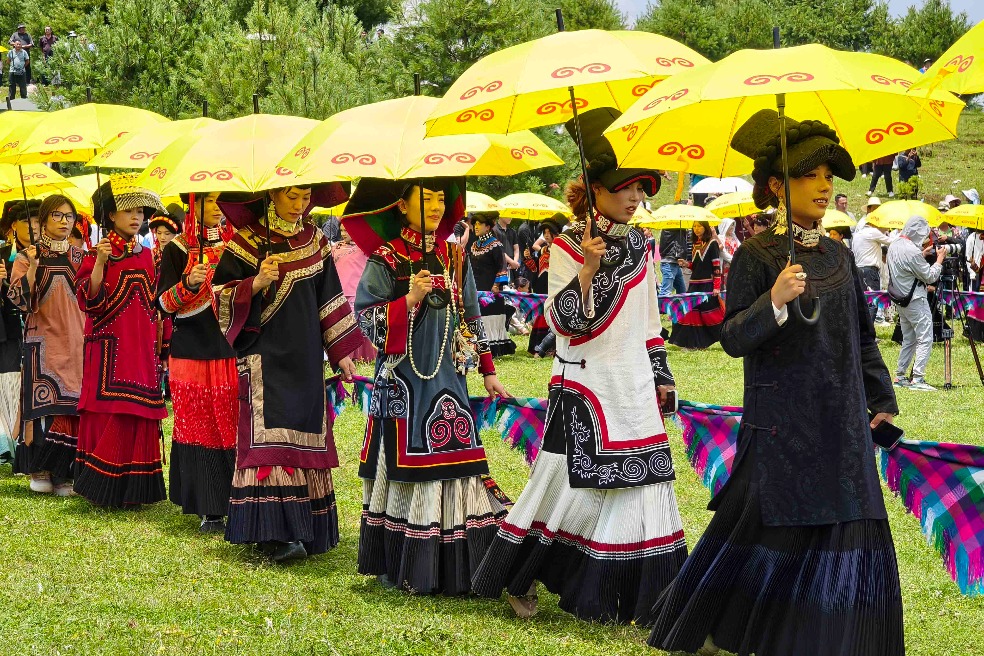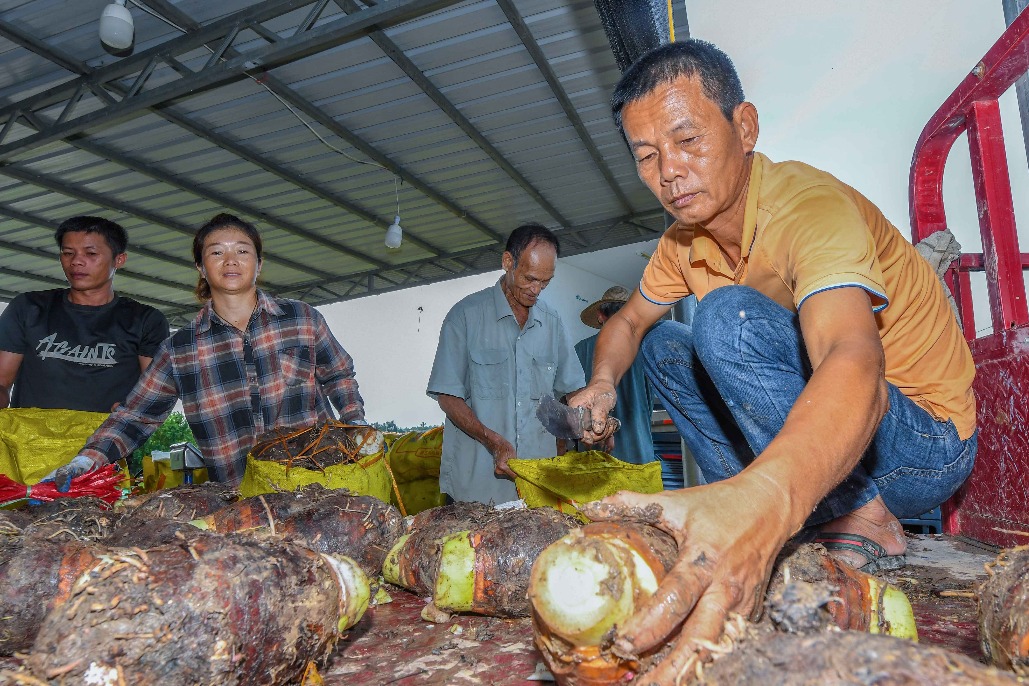Nanjing museum tells civilian stories of unyielding wartime resilience

In Nanjing, Jiangsu province, a four-story museum commemorating the Chinese People's War of Resistance Against Japanese Aggression (1931-45) stands as a living archive of courage and resilience, preserving more than 6,700 artifacts and over 40,000 books that bear witness to the harrowing realities of the conflict.
Among the treasures are haunting black-and-white photographs from the battlefields, each frame echoing with the silent yet profound narratives of a bygone era.
Wu Xianbin, a Nanjing native, is the curator of the private museum, called the Nanjing Museum of the War of Resistance Against Japanese Aggression. In 2006, he personally financed the establishment on a 5,000-square-meter site. What sets the museum apart is its unique perspective, offering a civilian narrative of the war, a rarity among China's nearly 200 commemorative institutions dedicated to the conflict.
Born in the city in 1964, Wu's journey toward establishing the museum began during his studies at Nanjing University in 1983. A chance encounter with a distressing 14-minute film captured by a pastor from the United States during the Nanjing Massacre left an indelible mark on him, prompting a deeper exploration of the city's wartime history.
In 1986, Wu transitioned from academia to entrepreneurship, founding a successful decoration materials factory. A pivotal moment came in late 2004 when he stumbled upon a worn booklet about the Nanjing Massacre. Flipping through its pages, he was overwhelmed by a chilling sensation. One page depicted a university auditorium filled with armed Japanese soldiers, devoid of students.
After purchasing the booklet for 10,000 yuan ($1,393), he embarked on a journey to collect historical materials related to the Nanjing Massacre and the war against Japan.
"It felt like the seed in my heart had finally met sunlight and couldn't help but grow outward," Wu said.
From that moment on, Wu spent weekends searching for war-related items across various locations. By 2006, his collection had grown to more than 100 pieces, and on Dec 12 that year, his museum officially opened to the public.
Over the past 19 years, the museum has welcomed more than 300,000 visitors free of charge, including over 100 overseas groups. Wu emphasized the importance of presenting the narrative of the war from a civilian perspective alongside the national narrative.
The museum's collection spans the entire spectrum of the war, featuring artifacts such as anti-Japanese war badges, historical documents, weapons, photographs and memoirs. It serves as a crucial platform for preserving and sharing the personal narratives and sacrifices of individuals during the war.
A permanent exhibition, People Who Refuse to Be Slaves — Exhibition of Anti-Japanese War Veterans' Materials, is located on the third floor. Since its establishment, interviewing and supporting war veterans has been a core mission of the museum.
As of this year, the museum's staff and volunteers have visited 1,795 veterans, recorded more than 3,610 hours of oral history and collected over 2,800 handprints.
"This work is urgent, and time is pushing us to move quickly," Wu said.
The museum has engaged in long-term public welfare activities to support war veterans. Volunteers from across the country have visited and assisted veterans in need. Since 2015, they have provided aid to veterans in 12 provinces, totaling more than 2.3 million yuan.
"This project could have started 10 years ago, but now it's impossible because many of these veterans have passed away," said a volunteer involved in the museum's veteran outreach efforts.
Wu said: "Our museum's artifacts come from the people, telling the stories of the people's resistance during the war. By reconstructing these details, the museum can better showcase history, especially the close connection between those who survived during the war and the fate of the nation," Wu said.
Looking ahead, Wu and the museum team plan to expand their historical archives, collaborate with universities for research, and enhance community outreach.
"We hope that more young people, through our folk artifacts and memories, will look at the all-out resistance of the older generation and feel their passion," Wu said. "History is not a dusty memory or buried stories in old papers, but a precious legacy left by our predecessors and serves as the cornerstone for our progress."
Guo Jun contributed to this story.
- Nanjing museum tells civilian stories of unyielding wartime resilience
- Hainan leads the way in protecting, restoring coral reefs
- Rail travel surges amid operational expansions
- Reform aims to forge 'elite engineers'
- South China Sea ruling slammed as illegal, invalid
- Record heat grips large parts of country





































